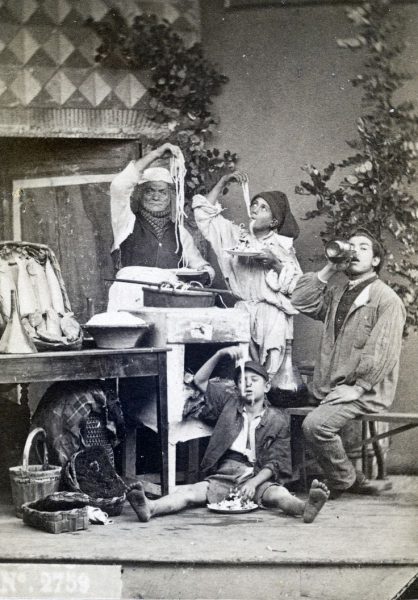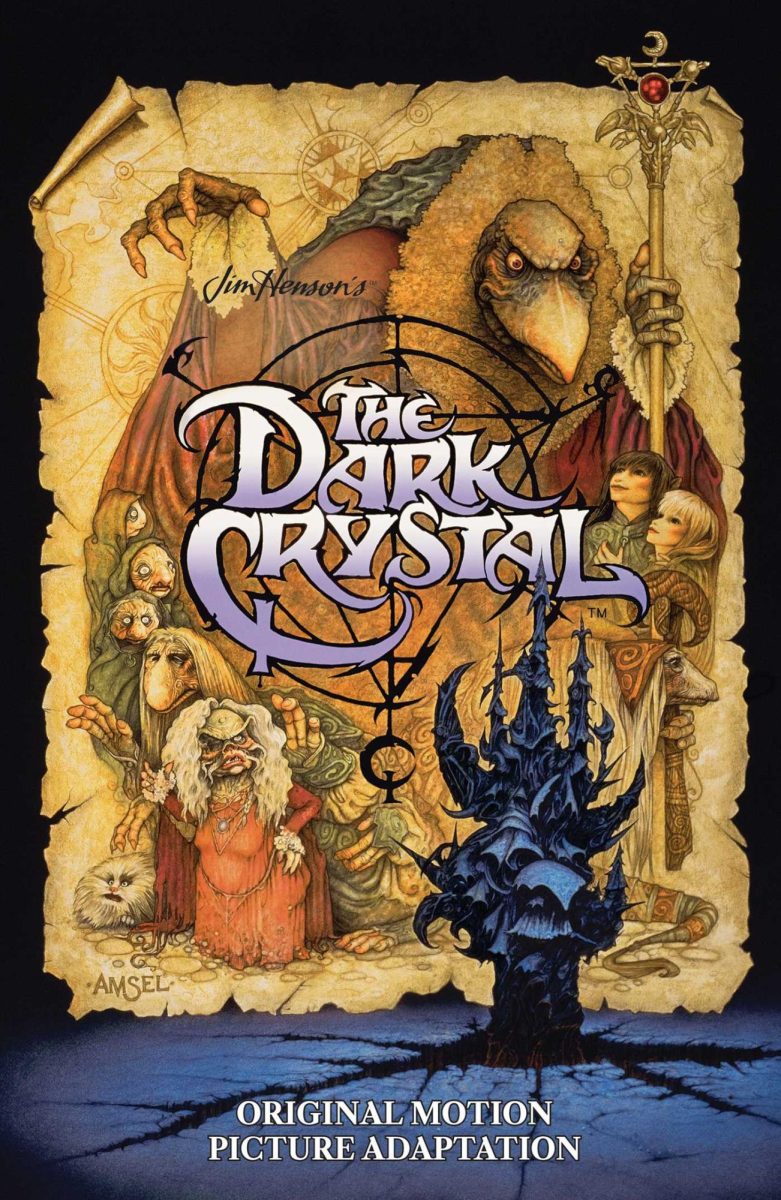
Everyone is familiar with the twenty-five common shapes of pasta… but which is superior above all? I will be ranking the shapes from worst to best based on the categories of texture, versatility, structural integrity, and mouthfeel. If you don’t like my ranking, you can take it up with no one because I do not check my email.
Starting at the bottom of the barrel with #25 is farfalle, or better known to simpletons as “bowtie” pasta. Ordinarily I’m all for breaking the mold and taking bold new approaches, but this freak of nature is far too bold. The ridged texture around the edges is by far one of the most unpleasant, and that odd pinch at the middle of the bowtie never cooks evenly; looks whimsical, tastes like betrayal. Farfalle cradles your sauce like a friend–and then, like Judas Iscariot sold the Prophet over for thirty pieces of silver, it sells out the sauce for thirty seconds off the boil time. This is a crime only punishable by death.
You will also find pappardelle, tagliatelle, manicotti, lasagna, fettucine, and linguine at the bottom rung of pasta society, which are ranked #24, #23, #22, #21, #20, and #19 respectively. The reason I’m lumping them all together like this is because their mouthfeel is not unlike if I were to shove a 2×4 into my mouth. They are all far too wide and flat, and pappardelle is the worst offender. At least lasagna feels less violating when combined with the meat and cheese of the whole dish (even if it is freeloading off the other ingredients’ work), but that is really all that it is good for. Pappardelle and tagliatelle have little to no redeeming qualities. While manicotti is not a rectangle, I find its sheer diameter deeply unsettling; if I wanted to eat a burrito, I would eat a burrito. Linguine is at the top of this plywood-tasting parade only because it is the thinnest, and because it reminds me of that pathetic ginger man from Disney’s Ratatouille (2007). Ultimately, rectangular shapes are simply not fit to be included in society.
Banished to spot #18 you will find fregola. Let’s not beat around the bush here: it feels like gravel, or maybe spider eggs in the way they clump together. If I wanted a tiny shape, I would just buy orzo. Ranked at #17 is vermicelli. It feels like eating hair—there is really no other way to say it, and this deeply disturbs me. Next at #16 is bucatini. Bucatini has terrible structural integrity. For being a long and narrow type, it is hardly bendable, which really defeats the purpose. The outer shell is far too thick and the little hole in the center is very agitating when I am trying to slurp a whole clump of noodles into my mouth; the outside air travels through the hole instead, allowing for little to no suckage. Next on the list at #15 is rigatoni, which has the same issue of being too wide, making it quite inconvenient to put into my mouth. Once again, its structural integrity is laughable—it just flops and sags around pathetically, making it difficult to pick up. It is ranked higher than bucatini because its walls are thinner and have a fun texture.
As we move on from the terribly offensive shapes we’ll find tortellini. While it is hard to go wrong with shapes that hold extra ingredients inside, something about this particular one leaves me flummoxed, befuddled, and bewildered. Why is it so small? How did they fold it like that? Why does it look like a little person’s butt? For these unanswered questions, tortellini goes at #14; if I wanted a shape to hold other ingredients, I would just go with ravioli. I have no very strong feelings about gemelli; its spiral shape only makes me yearn for the superior cavatappi, so it lands itself a spot at #13. Fusilli, positioned at #12, is another interesting spiral shape, but the ridges jut out a little too much, and it is a little too floppy for what it is supposed to be. At #11 is penne, which I can’t help but feel a little disappointed when I eat. Penne is merely a lesser form of ziti. Capellini, or “angel hair pasta” if you’re some type of freak, is ranked at #10; it is quite ironic that the shape better known as “angel hair” tastes less like hair than vermicelli, but sometimes it still feels a little bit like eating actual hair.
At #9 and above, the list gets into shapes that I might willingly pick out in the pasta isle, starting with ziti. Ziti is a wonderful example of the phrase “less is more.” Its long, tube shape is the perfect diameter and length for sticking the pieces onto the prongs of my fork and slurping them into my mouth. The ridged texture all around is simple and delectable. Earlier, I criticized fregola for being too small, but please do not misinterpret my words and think that I dislike all small pasta shapes. Ditalini, for example, is delightfully tiny without reminding me of kind of animal eggs. Because the pieces are so little, they are fun to pick up and move around in my mouth. Ditalini goes at #8. Standing strong at #7 is gnocchi. I find gnocchi simply adorable—they look like little loaves of bread or potatoes. Perfectly bite-sized with a smooth and inoffensive texture. Next at #6 is orzo. Orzo tries so hard to be rice and thrives in its identity crisis. It is delectable on its own, but it also goes so well in broths.
The top five shapes are simply delectable; there is no other way to describe them. They are shapes which Michelangelo himself could not match in his sculptures. Beginning with #5 is cavatappi—perfectly geometric, as all things should be. I take immense pleasure in sticking two pieces together and letting them slide up and down one another like a corkscrew. It is captivating. Enthralling. World-stopping. Everyone needs to witness this phenomenon at least once in their life. Ravioli, positioned at #4, is the champion ingredient-holding pasta shape and it is futile that any other kind even tries. One must appreciate the convenience of meat (or whatever ingredient you choose (could be spider eggs for all I care)) being packed into perfect bite-sized pieces. Personally, I would like to give whoever invented ravioli a big smooch on the cheek.
Standing strong at #3 is orecchiette, meaning “little ears” in Italian. How adorable is that? Who doesn’t love the image of eating human orifices? Orecchiette perfects the chunky pasta shape, and its sauce-holding capabilities are among the best. Although it is in the top three, there is something comfortable about orecchiette; it is elite and approachable. I would serve it to impress guests, but also to make me feel better after sobbing over my broken relationship with my father. Taking the #2 spot is the one and only spaghetti. Do I even need to explain why spaghetti is top three material? It is the default settings pasta—the lawful good human paladin of pasta—but that is exactly why it is so good. Spaghetti is a cultural icon, comparable to the likeness of Elvis Presley or Technotronic’s “Pump Up the Jam.” No matter how famous you are, you will never be as famous as spaghetti. Not too thick like bucatini, not too thin like vermicelli. Spaghetti is a pasta for the people. Not to mention, its shape creates the perfect conditions for fork twirling, another captivating pasta phenomenon.
The only one that transcends the petty squabbles of lesser shapes, however, is conchiglie. Spaghetti and orecchiette are great, sure, but riddle me this: does anyone else cradle sauce, cheese, pesto, or butter like conchiglie does? “No drop left behind” is conchiglie’s motto. Structurally sound, versatile, ever so toothsome. The words to describe it are beyond me. The dimensions of the conch shell shape are a wonder to explore. You do not simply chew conchiglie, rather you embark on a tactile journey through valleys and rivers of sauce and peaks of parmesan. It is the top of the mountain—the summit from which all other noodles are mere specs of dust destined to be blown away in the wind of irrelevancy. To rank it #1 isn’t even a decision. It’s a biological imperative.






